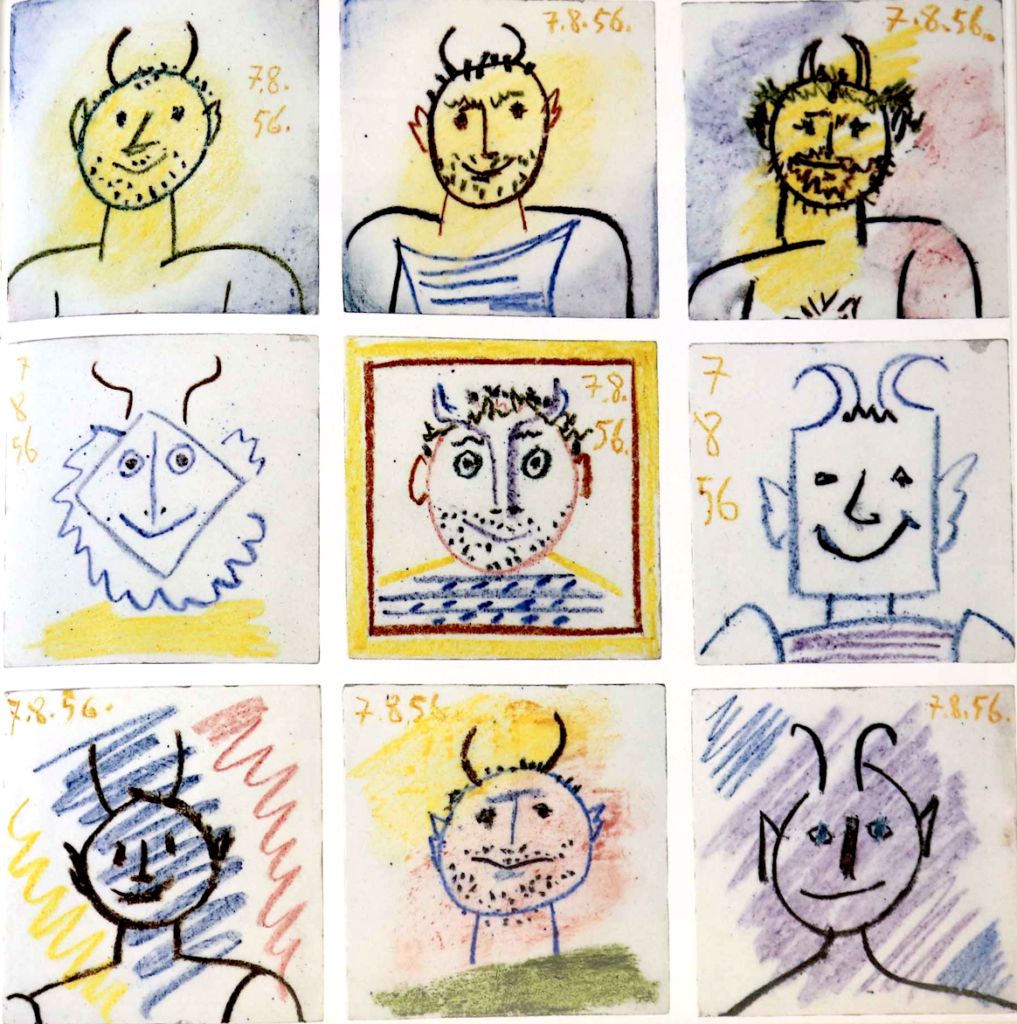Picasso’s Arcadian Rhythm
Though Picasso was working in the French Riviera, it seems he simultaneously imagined himself living in Ancient Greece. He idolized the Greek rhythm of life, their passion for leisure, as well as their boundless imagination.
After WWII, Picasso found himself searching for a way to ignite a rebirth of artistic culture. The enthusiasm he had for both a modern renaissance and an archaic nostalgia, found its place in Dionysus. As the god of wine-making, debauchery, and ecstasy; Dionysus has accrued many followers. Bacchus, as he is known to the Romans, is also famous for being twice-born. Zeus was forced to sew Dionysus to his thigh, to protect him from harm. Once released from his father’s body, Dionysus is reborn. Picasso quickly became inspired by the god of renaissance and the creatures he surrounds himself with.
Pan, the god of mischief, is among one of Dionysus’ closest companions. Pan and his faun attendants rule Arcadia as a mecca of mayhem. As a half-goat creature that represents masculinity and vitality, Picasso was instantly attracted to the image of the faun. Picasso was also most likely attracted to the inhabitants of Arcadia for their pastoral charm. As the god of shepherding and bee-keeping, Pan embodied Picasso’s new-found connection with the land around him.
In the summer of 1956, Picasso began to produce ceramic tiles, depicting the heads of fauns. He used ceramic pastels on tiles created by the Madoura workshop. These amusing portraits have been widely circulated for their allusive and comic value. The collection includes the bearded faces, hairy chests, and bloated cheeks of impish fauns. Each tile is conspicuously dated in the top corners or along the side.
Uncanny, Colorful, Fauns
The collection’s color palette is comprised of youthful bright pastels. The texture appears rough and hurried, as though he was carving with a crayon. The child-like quality of the collection produces an uncanny feeling. Traditionally, fauns are depicted as having exaggerated erections, and phallic horns on the top of their head. They are manifestations of sinful debauchery and sensuality. In this sense, it is unnerving to view so many of these mischievous creatures smiling back at you through carnal eyes drawn in smeared yellow ‘crayon’.

tile
red earthenware, drawn with ceramic pastels on white glazed ground, glazed
10.5 x 10.5 cm
7.8.56
Photo by Eric Baudouin
Furthermore, the blank, white, background suggests environmental anonymity which is disconcerting. Typically, fauns are depicted from a third person-perspective as approaching a visible victim. From this front-facing, blank, perspective, however; the victim is certainly the viewer. The large group of small portraits suddenly appears threatening. The abstracted faces merge into a circus-themed army of miscreants.
Democratizing Art
As small ceramic tiles, these fantastical portraits provide a unique element of chance. The final product is not in Picasso’s control. The viewer is ultimately free to mix and match tiles according to their own taste and narrative invention. Beginning in the 1910s alongside the Dada movement, the art of ‘chance’ was born from the disillusionment of society after WWI. By relinquishing control, and allowing the viewer to decide the final outcome, the artist’s position of power is diminished. Marcel Duchamp would visually record the pattern created by dropping strings at random. Ellsworth Kelly chose the colors for his paintings by rolling dice. In the wake of societal upheaval, these artists were trying to democratize the art world.
Picasso, however, is not formally listed among these artists. Nor is he listed among those involved in the Fluxus movement, which succeeded Dadaism. He is, however, considered a founder of the cubist movement. At the age of eight, Pablo Picasso had already moved from pencil drawing to using oil paintings. He learned the technique and skill that was required at the time to be revered as a ‘good’ artist. At the beginning of the 20th century, Picasso began to forgo a realistic perspective for a fuller portrayal of the world around him.
“it took for me four years to paint like Raphael, but a lifetime to paint like a child” – Pablo Picasso
Analytic cubism tries to capture the physical world in its entirety, not just from a singular perspective. In this respect, Pablo Picasso, in fact, instigated the argument for democratizing art. Perspective itself is a deliberate lie the artist tells the viewer. For example, a painter will use an ellipse (a flattened circle) to portray the rim of a cup. In reality, the shape of a cup is circular. It only appears as an ellipse according to the angle from which it is viewed. By favoring an inclusive perspective, Picasso is, in turn, arguing against the elitist culture surrounding the art world.